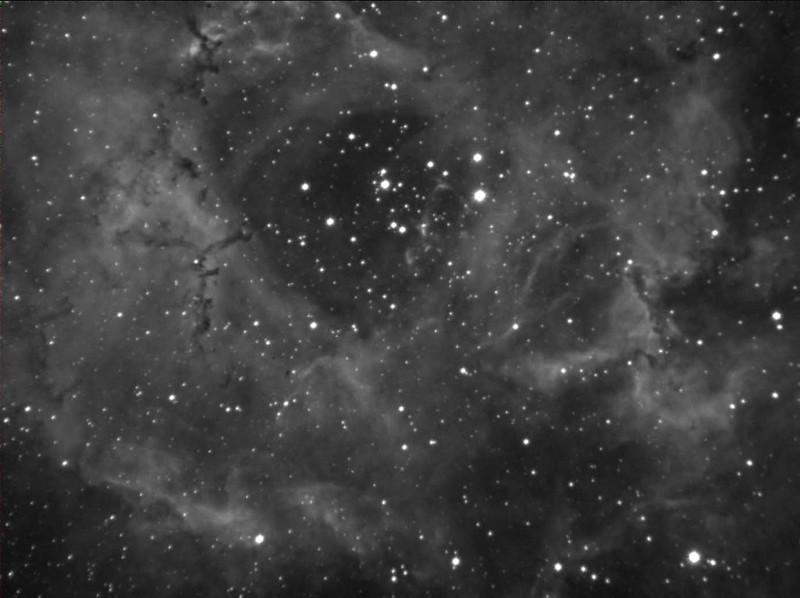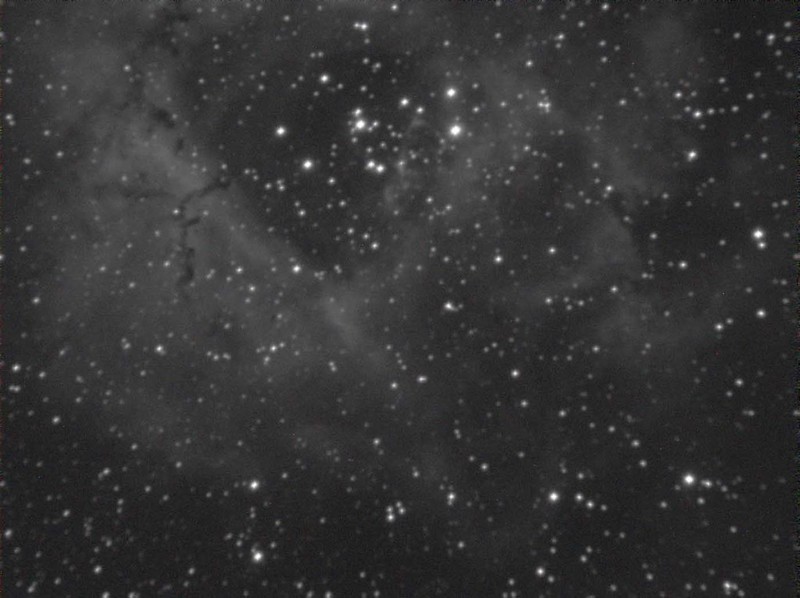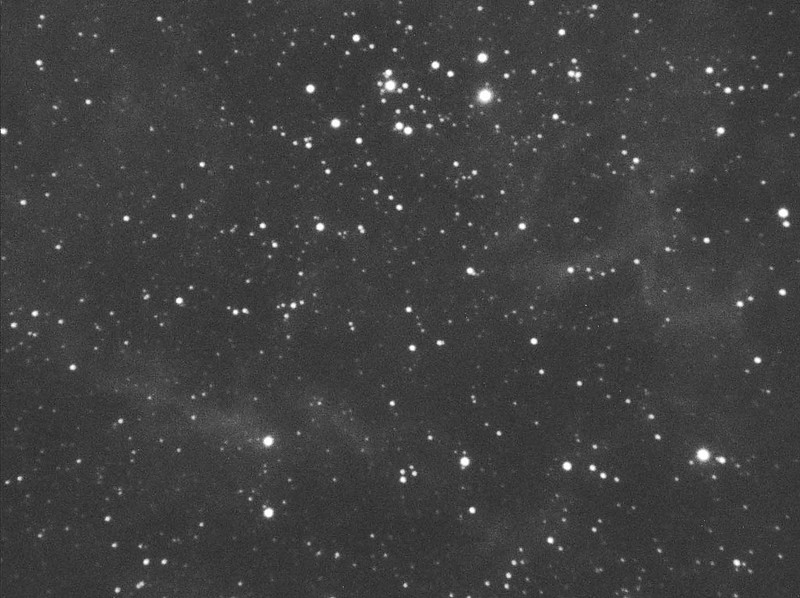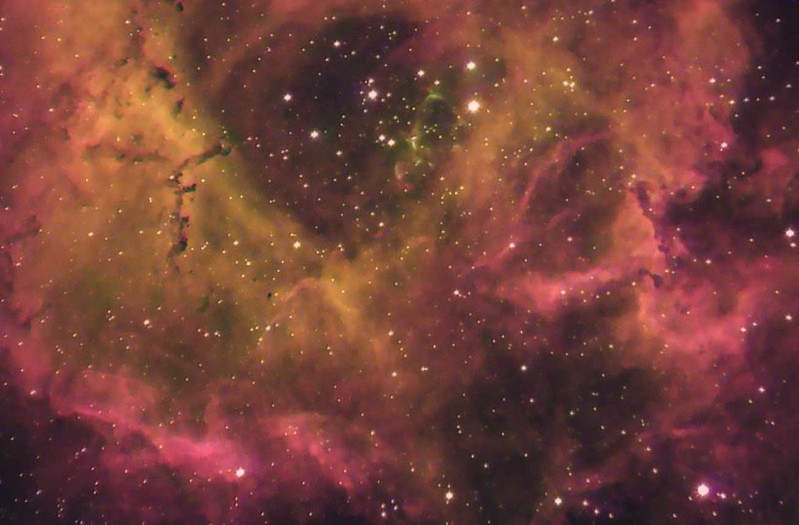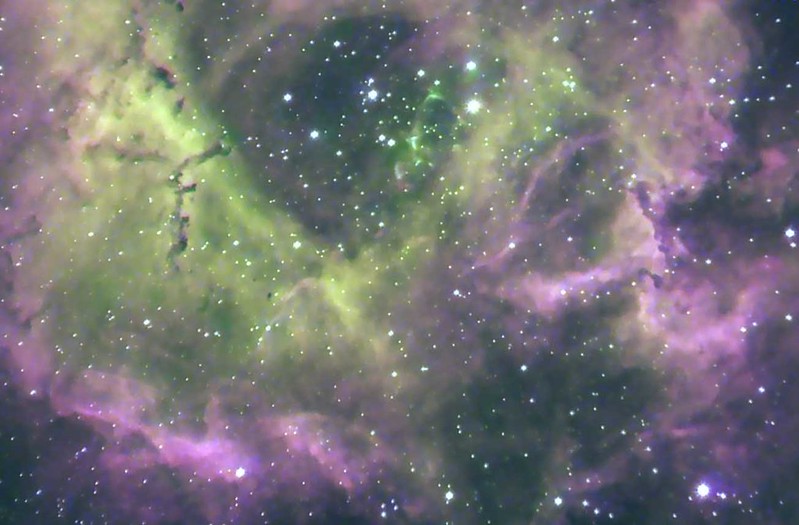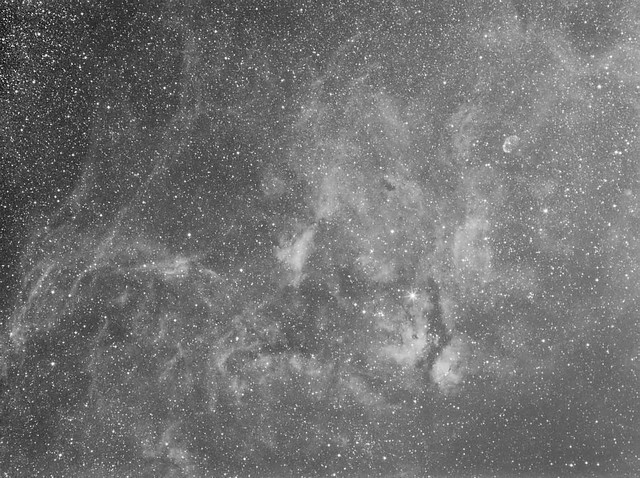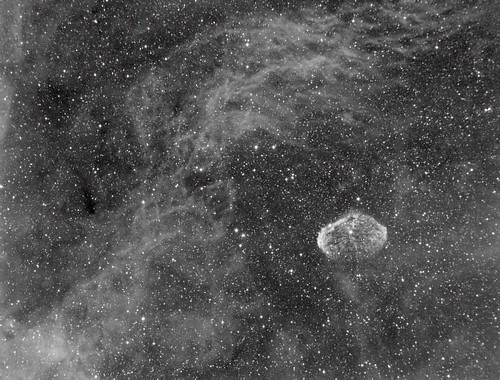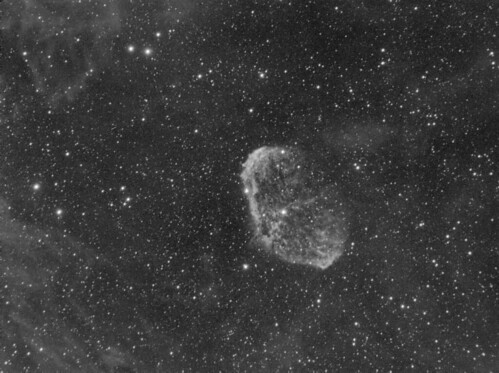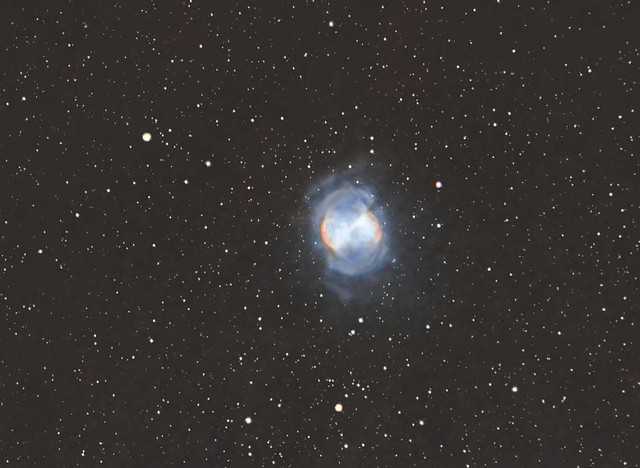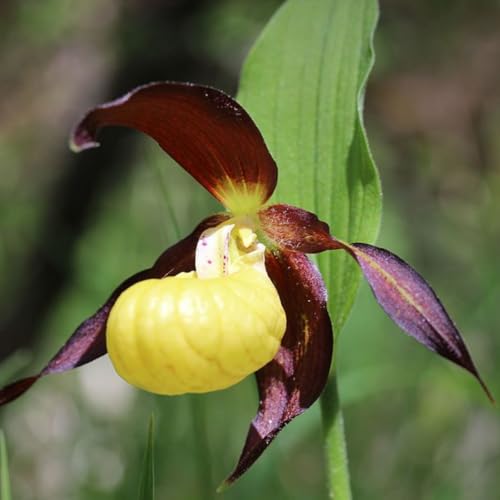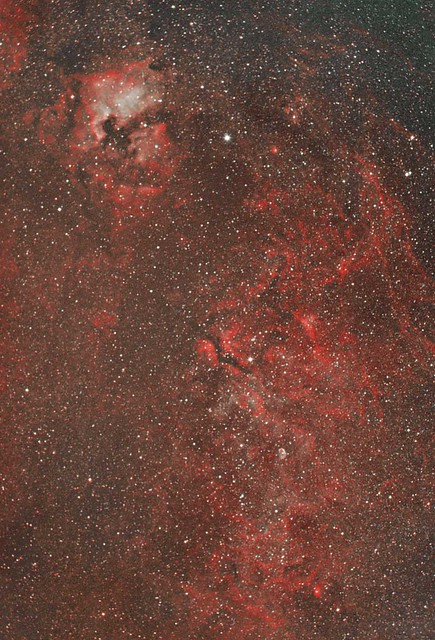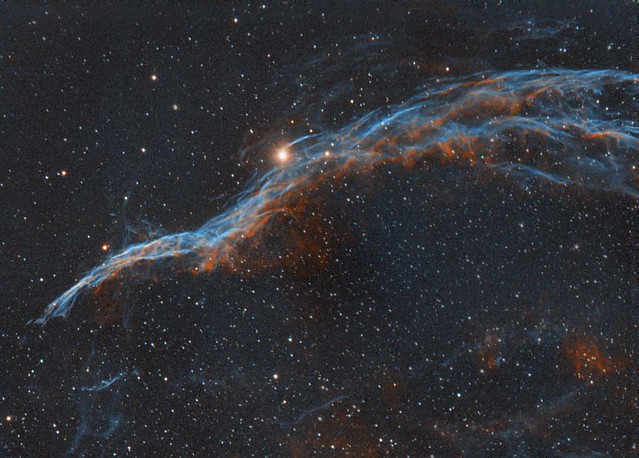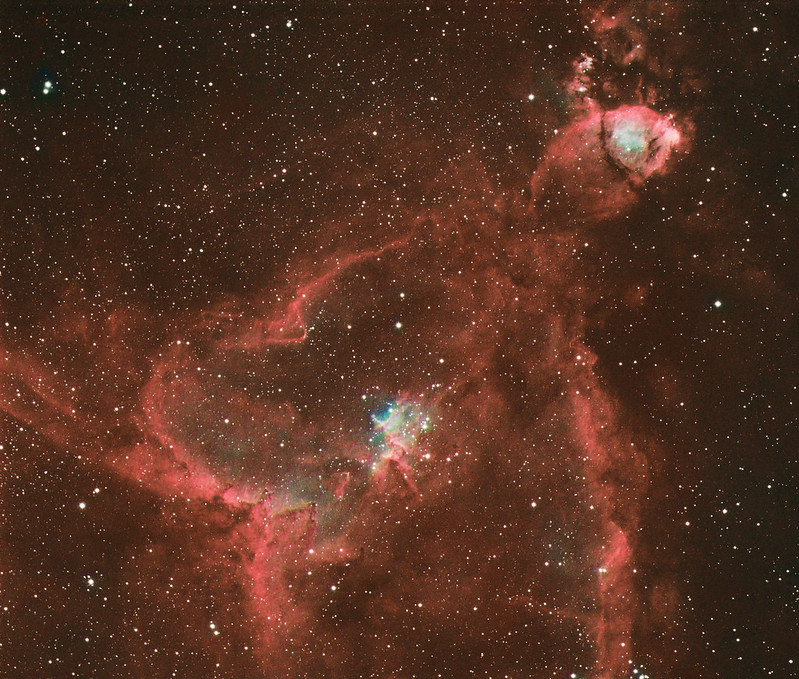I got a new camera last month. An Atik 314L+ monochrome. It's a CCD camera especially made for astrophotography. It has internal cooling to reduce read noise and has a higher quantum efficiency (essentially is more sensitive). And because it is monochrome, it is able to use each color of (RGB) at 100 %, instead of 33% efficiency (as in a DSLR). The only draw back to this particular camera is that the sensor is much smaller than a DSLR's sensor., so the field of view is much narrower (they make larger format CCD's but they are really expensive). SO I went to northern Nevada last week to take some exposures of the Rosette Nebula. This is what I got. The processing is fairly involved, here is a short synopsis with pictures.
The Hydrogen alpha filter stack 30 x3 minute subs (used as Red for RGB)
The Oxygen III filter stack 10 x 3 minute subs (used as Green for RGB)
The Sulfur II filter (actually only got one sub, so its pretty grainy, really only used it for a blue channel in the RGB image)
so, with each one, I remove the stars and combine in RGB channels (Photoshop), while aligning with free transform.This gives a color photo without stars.
I use the Hydrogen alpha image as the Luminance layer since it pretty much has all the detail for all three. Combine this with the RGB image and this was the final product.
This was about two hours worth of exposures (3 minutes each). I spent about eight hours trying to learn everything and dealing with technical problems. There was a lot of cursing going around, but I am pretty happy with it as my first 'professional' level astrophotography image.





